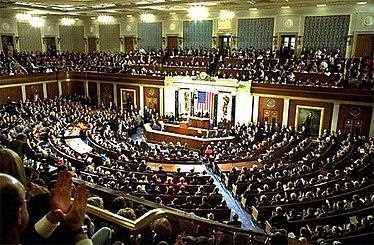In the United States, the power of the House of Representatives has shifted dramatically over the course of the twentieth century. From 1910 to the 1970s, several major shifts in the power structure of the House of Representatives occurred. These shifts in power can be attributed to technological advances, changes in the demographic makeup of the population, and the increased influence of special interest groups.
In 1910, the House of Representatives was heavily dominated by conservative Republicans, who had a strong majority in the chamber. The party in power had a great deal of influence over legislation and policy, which was primarily focused on maintaining the status quo. This was especially true of the tariff system, which was used to protect domestic industries.
By the 1970s, the power of the House had shifted considerably. The Democratic party had gained a majority in the chamber, which significantly changed the power balance. The party was more progressive, and the focus was on passing legislation that addressed social and economic issues. The New Deal was passed during this period, which created a number of government programs to help the poor and the unemployed. Additionally, civil rights legislation was passed, which ended discriminatory practices.
The shift in power was due to a number of factors:

Firstly, the rise of the Civil Rights Movement meant that more African Americans could register to vote and be represented in Congress for the first time. This meant that the Democrats had a much larger constituency and were increasingly able to pass legislation in line with their desires.
The second major factor was the increasing shift of power away from the rural South. This was caused by the industrialization of the North, which was attracting more and more people who wanted to work in factories. This meant that the industrial North was gaining clout in Congress and the traditional rural South was losing out.
Thirdly, the rise of the conservative movement also had an effect on the shift of power. The conservative movement was opposed to the liberal policies of the 1960s and advocated for fiscal responsibility, lower taxes, and a stronger military. This meant that the Republican Party was gaining strength and power, while the Democrats were increasingly becoming a minority in Congress.
Fourthly, The increased influence of special interest groups also played a role in the shift in power. Lobbyists were more influential in the 1970s than they had been in the past, and they were able to influence members of Congress to support their causes. This had a profound effect on legislation and policy.
Finally, technological advances had a major effect on the power balance in the House of Representatives. Television broadcasts, for example, allowed for greater exposure to politicians. This increased the visibility of politicians and their causes, and it allowed for more influence to be exerted on members of Congress.
Overall, the power of the House of Representatives shifted dramatically from 1910 to the 1970s. This shift was due to a combination of factors, including technological advances, the changing demographic makeup of the population, and the increased influence of special interest groups. As a result, the legislation that was passed during this period was much more progressive than it had been in the past.